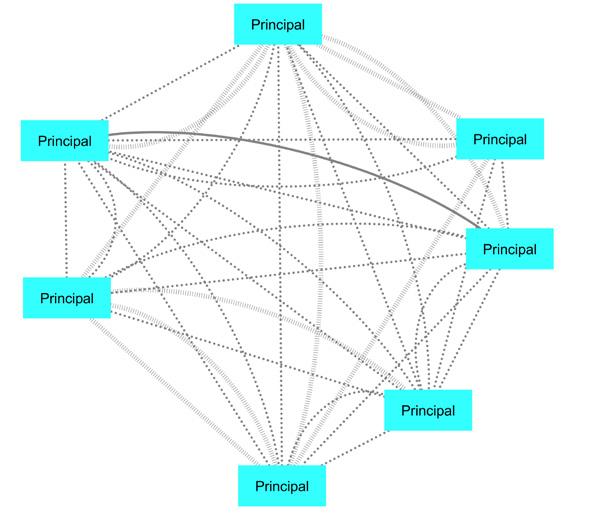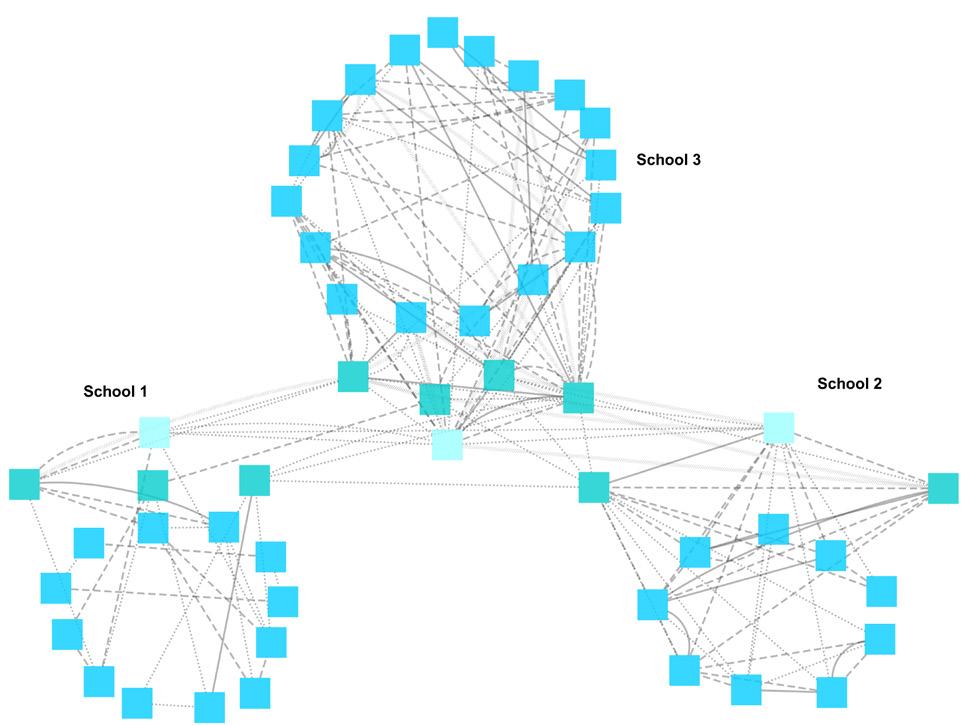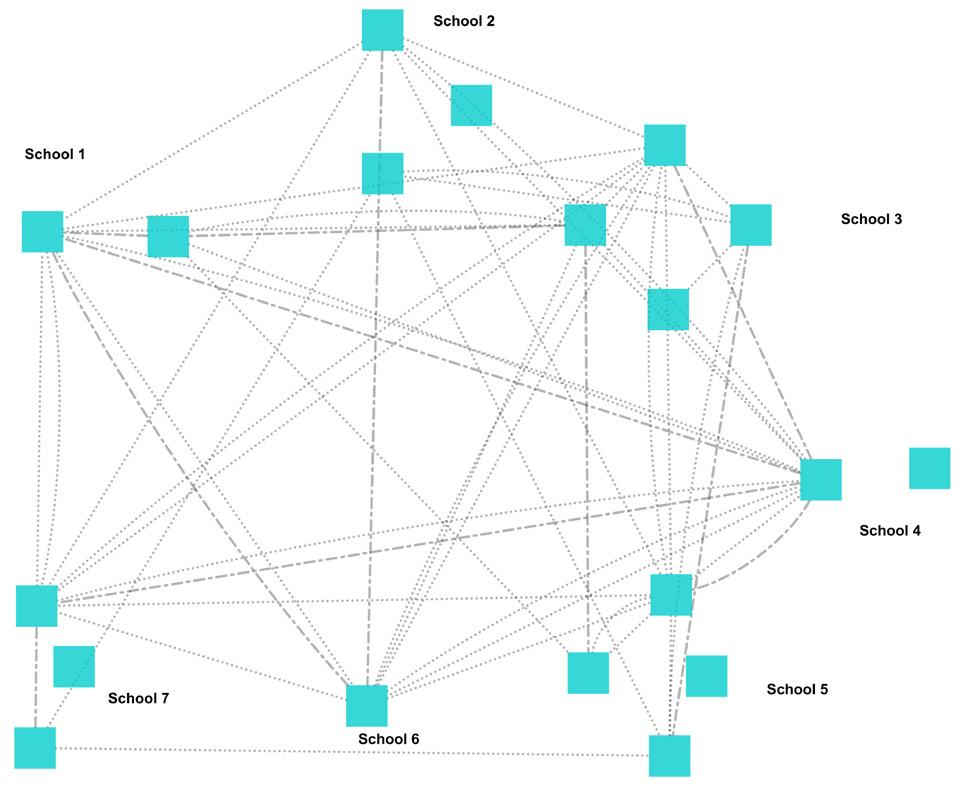
7 minute read
Leadership and decision-making
Leadership and decision-making was a shared process founded on relational trust
In ERO’s meetings with the principals as a group, we recognised their absolute commitment to the vision for Kahukura and to working as a partnership. The principals operated a collective approach to decision-making but also had strong structures to support the devolution of leadership through their schools and across the network. A real advantage for Kahukura has been the stability of this group of leaders, with six out of the seven principals having been in their schools for over five years, and the other principal for between three and five years. Their approach aligned with their belief in the power of the collective rather than ‘top down management’ and their commitment to open, cooperative decision-making.
Advertisement
“[Kahukura] has developed a view of not having specific but distributed leadership, and maintaining individuality.”
Team leader
The principals of the schools met regularly as a group to share and discuss what was happening in their individual schools. No individual led this group. They believed a collegial, consultative approach built professional trust across the schools. They valued discussion and reaching agreement on strategic decisions for Kahukura, however long it took. Principals reported to us that the non-hierarchical structure of this group had led to well-argued and well-founded decisions. One principal described these meetings as:
“Lots of talk and vigorous disagreement that arrive at accord.”
Principal
Principals valued the support they gave and received from each other, and felt comfortable sharing concerns with supportive colleagues. Across the leadership group, principals were assigned a focus area and had responsibility to support Lead teachers. Lead teachers worked jointly and across schools to deliver on specific projects and focus areas. Principals were the most connected people across Kahukura, with monthly contact where solutions and problems were jointly shared. figure 2 shows the principals’ connections to each other, indicated by a line. In figure 2, the frequency of an interaction between principals is indicated by the line pattern. ERO also confirmed the strong engagement between principals and their focus area leaders. The consultative approach employed by the principals was also effective in building professional trust and collegiality among the focus area leaders. Principals were also connected to some senior leaders and teachers across Kahukura.
FIGURE 2: Discussions on ways to fix a problem regularly occurred among principals
Key
Less than monthly
Monthly
Weekly or daily
Source: ERO SNA Survey
Within school perceptions of decision-making
The singular focus by leaders on lifting teaching practice and supporting students to thrive was equally replicated across staff. Eighty-four percent of staff who responded to our survey indicated that this was the central theme of dialogue between staff. Eighty-one percent reported that this was central to decision-making in their schools (Appendix 1). There was less agreement across teachers regarding the adoption of agreed processes to decision-making, with a third of all respondents not aware of specific processes within their schools in respect to how decisions are taken. There was also a level of variability in staff confidence regarding the extent to which actions agreed would improve teaching practices. A proportion of staff were concerned that some staff might not necessarily change their practice because of decisions taken by their team. There was a greater level of variability between schools in relation to staff responses here.
Leaders prioritised student wellbeing
Principals and boards of trustees across Kahukura planned for education solutions they felt were appropriate to this area of Christchurch. Leaders shared an urgency about the need to address the wellbeing of their learners and their families and whānau in the wake of the 2010 and 2011 Christchurch earthquakes. They planned to raise students’ sense of wellbeing through focussing on improving student agency and their understanding of themselves as capable and deep learners. In addressing learner wellbeing concerns, Kahukura worked closely with the development of Mana Ake13, an initiative led out of the Canterbury Clinical Network. Mana Ake aims to work with schools to support teachers, families and whānau when children (aged five through 12 years) are experiencing ongoing issues that impact their wellbeing.
Through Mana Ake, Kaimahi (psychologists, social workers, counsellors, teachers and youth workers) work with children or groups of children and their families at school, in the community or at home. A key initiative by Kahukura was establishing an agreed wellbeing measure for all learners and a shared approach through their Special Education Needs Coordinators (SENCOs) for engaging with, and bringing in, these services.
Five focus areas
In addition to a central focus around wellbeing, the Kahukura principals agreed on the priority to establish student–centred teaching practices. To challenge and extend students, focus was placed on creating authentic learning opportunities designed to challenge and extend students. The intention of Kahukura was to improve learner wellbeing by enhancing teachers’ practice. Since Kahukura was established, this has developed across five focus areas: • deep learning • cultural responsiveness • creativity (music) • leadership14 • inclusiveness.
In September 2013, the New Zealand Principals Federation (NZPF) launched its Māori Achievement Collaborative (MAC) initiative. Kahukura, then called the Cashmere cluster, became one of the first six MACs in New Zealand and for a number of years the only MAC in the South Island. This initiative gave focus to the work of Kahukura. This focus allowed all schools within Kahukura to build on what was already taking place in a small number of schools. The work from MAC began with the principals and made each of them thoughtfully examine what they were doing in their own schools to promote Māori achieving success as Māori. Principals felt their vulnerabilities were exposed, which helped grow a deep trust in the integrity of the project and in each other. Principals felt this trust allowed for the beginning of lasting changes across their own schools. This approach enabled all schools to come to understand what might be involved in each prospective initiative and, importantly, how it might be ‘landing’ with teaching staff in those schools. In 2014 the CoP joined New Pedagogies for Deep Learning (NPDL) as the only cluster in NZ. Initially these two initiatives were the two focus areas for Kahukura. Over the past eight years, Kahukura’s emphasis and focus has evolved and adapted, building out from the processes, partnerships, infrastructure and leadership structures originally established. Table 1 shows the journey that the schools have followed over this period. A strong feature of Kahukura’s approach has been the decision to focus on teacher development in a staged way, as opposed to taking on all the initiatives at once.15 from our exploration, Kahukura’s approach can be seen to have built off the successes of their initial deep learning work, implementing many of the deep learning strategies into subsequent focus areas. While they have added additional focus areas over time, SNA indicated they have sustained their focus on those initial professional learning priorities. Responses from teachers in the SNA survey showed this, as they had coaching and peer conversations in the initial and newer focus areas (see Table 3). This clearly points to the strength with which learning and improvement among teaching staff continues to be reinforced through the attention of leaders, practice leads, and between peers through their PLCs.
14 The CoP’s 2020 strategic plan identified leadership would be developed in each school; including providing opportunities for teachers, middle leaders and principals. 15 See Robinson (2017) Reduce Change to Increase Improvement; Corwin Impact Leadership Series.
TABLE 1: Kahukura has incorporated five focus areas since establishment
Deep learning
An initial focus area
• Increasing professional development • Emphasising learning environments where students can develop critical thinking • Enhancing the educational value of learning partnerships • Increasing attention to developing student agency
Cultural responsiveness
An initial focus area
• Improving educational outcomes for Māori students with all schools involved in the
Māori Achievement Collaboration
• Building principals’ and Lead teachers’ confidence and competence in using te reo Māori • Supporting teachers and students to learn te reo and tikanga Māori • Working with iwi to develop a te reo programme
Creativity (music)
Added in 2015
• forming a south-west Christchurch music and cultural festival • using creativity and personal expression as a way for students to develop key competencies and self-esteem • Providing opportunities for students to demonstrate their natural talents, abilities and interests
Leadership
Added in 2016
• Building leadership in the CoP • Annual middle leader professional development • Increasing principals’ mentoring of and professional guidance for Lead teachers to support them in their role
Inclusiveness
Added in 2016
• Increasing use of designated Lead teachers – meeting to allocate studets to Mana Ake • Supporting teachers through professional learning and development programmes • Indentifying what teachers could do to help individual students socially, emotionally and in their learning • Developed a database with MoE – using data to measure impact • Informed Mana Ake Collaborative model to other clusters






